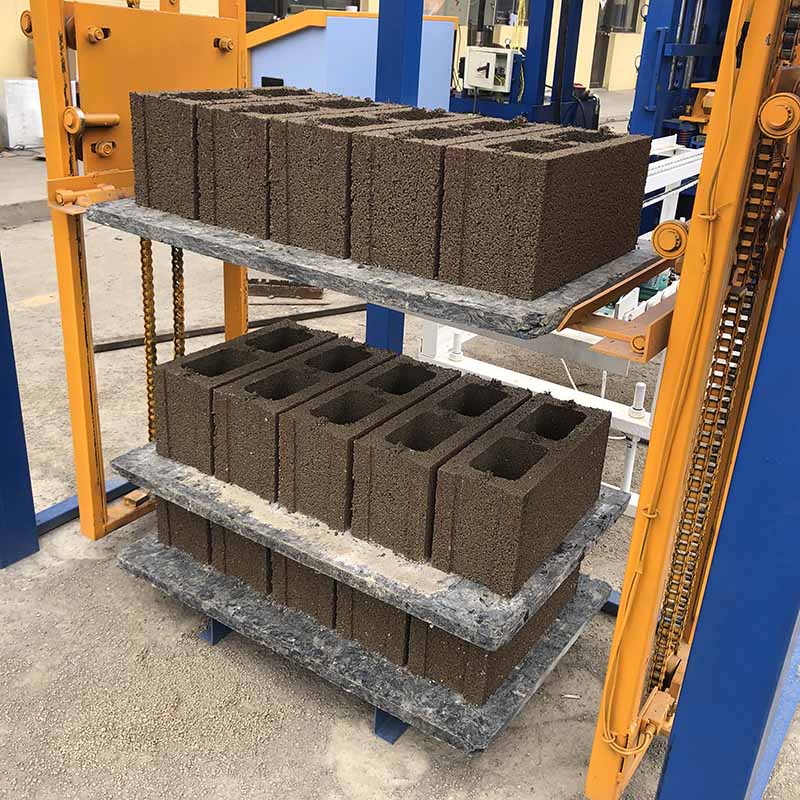
Image source:Aiwei block machine
Introduction
Brick making is a fundamental activity in the construction industry, providing the essential building blocks for infrastructure and housing development. As the demand for bricks continues to rise, it is crucial to explore energy-efficient and sustainable production methods. China, being one of the largest brick producers in the world, has made significant strides in developing advanced brick making machines. In this article, we will delve into the energy consumption and efficiency of Chinese brick making machines, examining their impact on both the environment and the brick manufacturing industry.
The Significance of Energy Consumption in Brick Making
Energy consumption in brick making is a crucial factor that affects both the cost of production and the environmental footprint of the industry. Traditional brick making methods often rely on energy-intensive processes, such as firing bricks in large kilns fueled by coal or wood. These methods not only contribute to air pollution but also consume substantial amounts of non-renewable resources. Thus, it becomes imperative to explore alternative methods that can reduce energy consumption and mitigate environmental impact.
Chinese Brick Making Machines: Advancements and Innovations
China, known for its manufacturing prowess, has been at the forefront of developing energy-efficient brick making machines. These machines incorporate advanced technologies and innovative designs to optimize energy consumption without compromising the quality of the bricks produced. Some notable advancements include:
Hybrid Power Systems: Chinese manufacturers have introduced hybrid power systems in brick making machines, combining electric and hydraulic power. By utilizing electric motors for lower-load operations and hydraulic power for heavy-duty tasks, these machines offer improved energy efficiency.
Intelligent Control Systems: Automation and intelligent control systems have become integral to Chinese brick making machines. These systems optimize the production process, reducing energy waste by precisely controlling factors such as mixing, molding, and drying.
Waste Heat Recovery: To minimize energy loss, Chinese machines now integrate waste heat recovery systems. These systems capture and utilize the excess heat generated during brick production, such as from kiln exhaust gases, to preheat raw materials or water, resulting in significant energy savings.
Renewable Energy Integration: In line with China’s commitment to sustainability, some brick making machines incorporate renewable energy sources. Solar panels and wind turbines are integrated into the machines, harnessing clean energy to power various operations and reducing dependence on fossil fuels.
Benefits of Chinese Brick Making Machines
The adoption of energy-efficient Chinese brick making machines brings numerous benefits to the brick manufacturing industry and the environment:
Reduced Energy Consumption: These machines employ advanced technologies to optimize energy use, leading to substantial reductions in energy consumption. This not only lowers production costs but also minimizes the environmental impact associated with brick manufacturing.
Enhanced Productivity: Chinese brick making machines offer improved productivity through automation and intelligent control systems. By streamlining the production process, they reduce manual labor requirements and increase the overall output, contributing to efficient and cost-effective brick production.
Lower Emissions: Traditional brick making processes, particularly those reliant on coal firing, generate significant air pollution. Chinese machines, with their advanced technology and cleaner energy sources, help mitigate emissions, contributing to improved air quality and reduced environmental harm.
Resource Conservation: By employing waste heat recovery systems, Chinese machines maximize resource utilization. The captured heat is used to preheat raw materials or water, reducing the energy required for these processes. This approach ensures efficient use of resources and minimizes waste.
Challenges and Future Considerations
While Chinese brick making machines offer promising advancements in energy efficiency, there are still challenges to address and areas for further improvement:
Affordability and Accessibility: The initial cost of acquiring energy-efficient brick making machines can be a barrier for small-scale brick manufacturers. Efforts should be made to make these machines more affordable and accessible to a wider range of producers, ensuring widespread adoption.
Skill Development: The operation and maintenance of advanced brick making machines may require specialized skills. Training programs and technical support should be provided to brick manufacturers to enable them to harness the full potential of these machines and maximize energy efficiency.
Environmental Regulations: Government regulations and policies play a crucial role in promoting energy-efficient practices. Stricter environmental standards and incentives can encourage brick manufacturers to invest in energy-efficient machines and adopt sustainable production methods.
Continuous Innovation: The development of energy-efficient brick making machines should be an ongoing process. Manufacturers should continue investing in research and development to further enhance the efficiency and sustainability of these machines.
Conclusion
Chinese brick making machines have made significant strides in improving energy efficiency and sustainability in the brick manufacturing industry. Through the integration of advanced technologies, intelligent control systems, waste heat recovery, and renewable energy sources, these machines offer substantial benefits in terms of reduced energy consumption, enhanced productivity, lower emissions, and resource conservation. While challenges exist, concerted efforts from manufacturers, policymakers, and industry stakeholders can drive wider adoption of energy-efficient brick making machines, leading to a greener and more sustainable construction sector.
